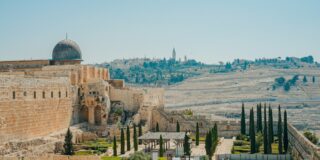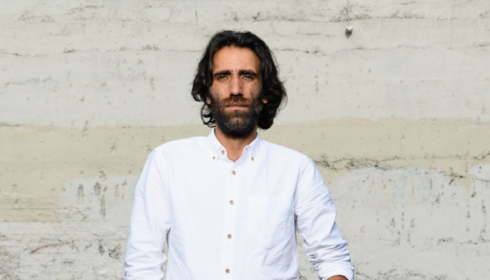
On the afternoon of Saturday 21 April, as part of the Melbourne International Comedy Festival, emerging and established comedic talent came together at the Melbourne Town Hall in Deadly Funny, Australia’s Aboriginal and Torres Strait Islander comedy showcase. For just under two hours the audience was entertained by Cy Fahey, Jay Wymarra, Eshua Bolton, Tristan Savage, Mia Stanford, Scott Campbell and Kevin Kropinyeri. Tying all of this together was one of Australia’s foremost cultural ambassadors, Sean Choolburra, who acted as Special MC for the event.
… a raw and somewhat disconcerting look at life …
Since its establishment in 2007, Deadly Funny has been a competition for Indigenous comedy performers. Some of the comedians were alumni from previous competitions – Stanford was Deadly Funny’s inaugural winner, Kropinyeri took the title in 2008, and Savage won last year’s Grand Final. Each artist performed for around 10 minutes, interspersed by the extraordinarily charismatic Choolburra, whose charm and wit was the string that tied seven extremely different acts together.
Fahey, who was also performing as part of the two-man show “Figments and Fragments” at the comedy festival, presented a raw and somewhat disconcerting look at life, thematising his Aboriginality, masculinity and role as a father.
… prior to 1967, Indigenous Australians were not considered to be human beings, but were thought of as equivalent to “flora and fauna” …
Wymarra, a radio host from Queensland, made his rather proper, British-sounding accent (the result of attending a Catholic boarding school) a focus of his performance. He joked animatedly about how his voice has caused people to doubt the genuineness of his Aboriginal identity.
Bolton, whose performance at Deadly Funny was only his second time performing stand-up (not that you’d know it), reminded us all that prior to 1967, Indigenous Australians were not considered to be human beings, but were thought of as equivalent to “flora and fauna” under the Flora and Fauna Act. He laughed that Indigenous peoples’ custom of impersonating animals was clearly misinterpreted by white people.
… Campbell also illuminated particular issues of (under)privilege and desire, and of things that are different between groups and things that are not.
Stanford spoke of the challenges of early motherhood (having just had a baby) and getting older. She joked about her light skin – what she called having “been colonised on a cellular level”.
Campbell, whose debut to stand-up was fantastically acerbic, was the least overtly political. He also didn’t seem to have an act as such, but rather a story that seemed completely true – the narrative was so refreshingly genuine that each member of the audience seemed gripped by his tale of wagging school with his friends (aka “minions”, as the story would have it) and being chased around town by a mean teacher in a white van. Without trying to, Campbell also illuminated particular issues of (under)privilege and desire, and of things that are different between groups and things that are not.
Kropinyeri … drew out a deep problem in contemporary Australian society: of perpetual action for Indigenous communities, without consultation with them.
Kropinyeri, a huge talent with plenty of comedic experience (and whose show, “Guess Who” was also presented at the comedy festival), boomed onstage and gave a very entertaining impersonation of a range of Aunties, Uncles and white folks. With his particular talent for physical comedy, and a feeling of love and respect (as opposed to mockery) that seems to come from his impersonations, he is a fantastic performer. He explained that in Indigenous culture, “deadly” means wicked, cool, or awesome. He drew this into hilarious exposition through a story of a local Queensland council that had received half a million dollars in order to fund an Indigenous anti-drug campaign. The council took the money, but (of course) failed to consult with the Indigenous community and produced television advertisements as well as posters which were plastered all over town that were adorned with the statement “Drugs are DEADLY”. Whether true or not, this moment in his show drew out a deep problem in contemporary Australian society: of perpetual action for Indigenous communities, without consultation with them.
… a fascinating similarity between a few of the comedians were their discussions of their Indigeneity being challenged …
The clear star in the line-up, however, was Tristan Savage. His deadpan presentation as a “government employee” attempting to instruct the audience on the fundamentals of racism, which was followed by a catchy song called “If I was a White Man”, detailing all the fabulous adventures and choices that would have been available to him if he was, well, a white man, was by far the best piece of the showcase. Savage drew child-like diagrams that illustrated the absurdity of race and racism in Australia and beyond. The crowd’s reaction to his short set seemed to indicate that, in my opinion, we were witnessing a star in the making. His discerning eye for paradox and incongruity were evident in the few moments he had on-stage, and I look forward to seeing more from him in the future.
There is often an impulse in mainstream, “white”, Australian society to collapse or erase the differences between Indigenous peoples …
It was the differences between each performer that made the showcase so successful. Nevertheless, a fascinating similarity between a few of the comedians were their discussions of their Indigeneity being challenged – whether due to voice or skin colour. For me, this reiterated the crucial (though under-recognised) fact that race isn’t in the colour of your skin or the way you speak, whilst also drawing out that our society’s obsession with such notions of race is a an over-simplification, and a destructive one at that.
What was also wonderfully evidenced by the array of performances was the ever-important to acknowledge – though seldom truly internalised – understanding of race as an aspect of identity, not identity in its entirety. There is often an impulse in mainstream, “white”, Australian society to collapse or erase the differences between Indigenous peoples, as though motherhood, fatherhood, angst, confusion, love and anger are not felt in the same way or with the same depth by “Others”. Comedy such as that presented by the performers at Deadly Funny questions such absurd and tired notions, hyperbolising stereotypes in order to illuminate their absurdity. Ultimately, such an exercise relies upon the audience to be truly transgressive – if they don’t look at themselves, then comedic expressions of stereotypes can serve to reiterate those stereotypes (thus serving the opposite purpose they are intended for).
Good comedy makes you laugh or smile. Fantastic comedy makes you think and laugh and smile. Truly spectacular comedy does all the above, but most interestingly and disconcertingly, makes you feel a tiny bit uncomfortable. Deadly Funny had a lot of good comedy, a bit of fantastic comedy, and just enough spectacular comedy to make me – and, I hope, others in the audience – wonder about the nature of race, and the possibilities for truly accepting and moving beyond the forms of it that have maintained oppression and division in Australian society. There was no real satisfaction at the end of the showcase, and nor should there have been. There is, after all, a long way to go. Comedy may just have a special place in moving us in the right direction.


